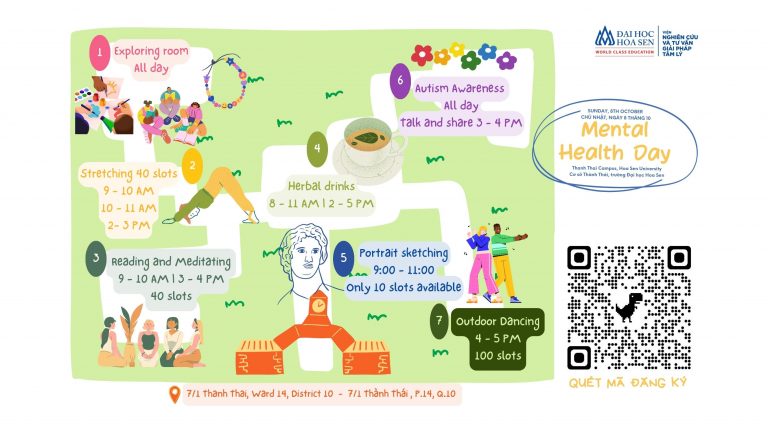Topic: EFFECTIVE COMMUNICATION SKILLS

Shared content includes:
- What is communication?
- What is the communication process?
- What is non-verbal communication? and
- Why non-verbal communication is important.
*** First of all, let’s start to understand what the concept of communication is.
- Communication is the verbal or non-verbal exchange of information, ideas, feelings, emotions, and opinions between two or more people (WH Newman & CF Summer).
- For example: Greeting someone is also communication, we say something to someone in verbal or non-verbal language, directly or indirectly is also communication. We text, email, give presentations, advertise, or make announcements, rules, regulations, policies, and orders are also communication.

*** Second, what is the communication process?
Do you know that the basic process or communication process in life is the key to 90% of success in work and life?
Now let’s find out what elements the communication process includes because problems related to communication can arise at every stage in the communication process. According to Nguyen Huu Than (2012), this process includes elements such as sender, transmission channel, encoding, decoding, receiver, and feedback. At each stage, there are potential causes of misunderstanding and confusion. We will take a closer look at each point below:
- Sender has an idea: You come up with an idea and you want to share it.
- The sender converts ideas into messages. When communicating a message, you need to know clearly why you are communicating, and what issue or thing you want to communicate about. You also need to be confident that the information you want to say is useful and accurate.
- The sender encrypts the message. This is the process of converting the information you need to convey into a message that listeners can understand. The form of the message can be verbal or written language or non-verbal language such as facial expressions, gestures, gestures, or tone of voice, mannerisms etc. that are successfully decoded by the receiver. Whether your coding is successful or not depends on your ability to communicate information clearly and simply and eliminate potential sources of confusion such as cultural issues, misinformation, and fake news—wrong decisions.
- The sender of the message: we choose verbal, non-verbal, or written communication channels and MEANS of expression such as phone, email, letters, internal announcements, face-to-face exchanges, text messages, etc. The channel and medium you choose depend on your message, where you are communicating, your need for speed, and the level of formality of each situation.
- The recipient receives the message
- The receiver decodes the message: The receiver needs to combine the encoding of your message and understand it. To avoid misunderstandings & misinterpretations of messages, effective reading and listening skills are important in decoding the message correctly and the new recipient responds in the way you want.
- Feedback recipient: FEEDBACK is key in the communication process because we can evaluate the effectiveness of our message. In case we discover that the recipient has misunderstood our message, we will at least have a chance to resend the message a second time and avoid falling into a situation where he said chicken and she said duck.

*** Third, what is non-verbal communication?
Nonverbal communication is a very effective form of communication that helps you see what is happening in another person’s head. The most effective communicators are sensitive to the power of emotions and thoughts communicated without words.
Nonverbal communication is the process of sending and receiving messages WITHOUT WORDS including facial expressions, looks, gestures & gestures, posture, voice intensity, appearance, communication behavior physical contact, use of space & time, etc. (Burgoon, Buller, & Woodall, 1989)
A study by an American university cited by Susan showed that about 93% of communication effectiveness is determined by NONVERBAL FACTORS. Another study also showed that the impact on communication effectiveness is determined by 7% by words, 38% by tone, and 55% by nonverbal language.
Thus, we can see:
- Verbal and non-verbal communication are rarely separated, but often complement each other.
- Verbal and non-verbal communication work together to create the most effective results.
- When verbal and non-verbal language contradict each other, people will FOCUS & BELIEVE in non-verbal language.

*** Finally, there are 5 reasons why non-verbal language is important:
The first reason is that non-verbal language clarifies the content of verbal language. It conveys quickly and easily, helping communication participants better understand the emotions and feelings of the other person to achieve the purpose of communication. Therefore, the person sending the message needs to present the message, specifically, concisely, in detail, and consistently and needs to exude his or her integrity.
The second reason is that non-verbal language helps convey mixed information
The third reason is that communication shows teachers how people react to us and our ideas. When evaluating a person based on their non-verbal communication, we can read a lot of things from them. For example, in a job interview, right from the time they are waiting, their non-verbal communication will reveal the skills, abilities, attitudes, strengths, and limitations of a candidate.
The fourth reason, through non-verbal language, we can control worrying habits and negative signals. For example, when we are nervous, we use supportive gestures that will help us feel more confident and calm during communication, or we can also use gestures excessively.
– The last reason is in communication, people respond and remember more of what they see than what they hear because a hundred hearings are not equal to one seeing. What people OBSERVE will stay in their minds for a long time, so we need to pay attention to whether our nonverbal behavior matches the verbal message or not.
In summary, we have just introduced important points about communication, the process of communication, nonverbal communication, and the importance of verbal communication. We see that non-verbal language is critical. The signals of non-verbal language are very different between cultures so understanding it depends on that culture and needs to be understood and interpreted within the framework of the specific situation & culture. If we can accurately read someone’s non-verbal language, we can explain their inner secrets, secrets, and hidden parts.
MSc. Doan Thi Ngoc – Lecturer of Department of Education and Training – Faculty of Social Sciences and Law – Hoa Sen University

















